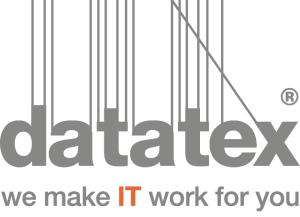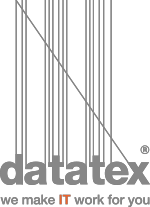Tekstil endüstrisinin, çoğunlukla sürekli değişim ve yenilik içindeki ürünler ve yoğun rekabet baskısı ile ilgili büyük zorluklarla karşı karşıya olduğunu anlamak önemlidir.
Rekabet baskısı, daha fazla ürün çeşitliliği, daha kısa teslim süreleri ve müşterilerin talep ettiği daha yüksek hizmet seviyesiyle bağlantılıdır.
Hızlı yanıt verebilirlik artık iş dünyasında büyük bir beceri olarak görülüyor, ancak bunun iyi yönetim süreçlerinin bir sonucu olduğunu anlamak önemlidir. Bu anlamda planlama ve kontrolün genelden ayrıntıya doğru sondajlama şeklinde ele alınması gerekir.
Geçmişte belki bir sisteme ihtiyaç duyulmuyordu çünkü aynı üründen aynı şekilde çok sayıda üretmek için standartlaştırılmış bir üretim vardı. Günümüzde, kişiselleştirilmiş müşteri deneyimi, düşük maliyetlerle anında ve yüksek kaliteyle ilgili büyük bir zorlukla karşı karşıyayız.
Dördüncü sanayi devrimi olarak da adlandırılan Endüstri 4.0’ın yol haritası, değer ağları arasında yatay entegrasyon, tüm değer zinciri boyunca uçtan uca dijital entegrasyon, dikey entegrasyon ve ağa bağlı üretim sistemleri ile karakterize edilmektedir.
Endüstri 4.0, üretim sürecinin ve tedarik zincirinin sanallaştırılmasına ve modülerleştirilmesine, Kurumsal Kaynak Planlaması (ERP), Üretim Yürütme Sistemi (MES), Ürün Yaşam Döngüsü Yönetimi (PLM), Tedarik Zinciri Yönetimi (SCM) ve diğer yazılım sistemleriyle birlikte Siber-Fiziksel Sistemler (CPS) ve IoT’ye dayalı üretimin esnekliğinin ve kişiselleştirilmesinin sağlanmasına yol açacaktır.
Endüstri 4.0’ın anahtar kelimeleri:
– Bağlanabilirlik:
Bağlanabilirlik, ayrı ağ düğümleri arasında bağlantılar gerektirir. Bu bağlantılar görünürlüğü artırır ve üretim takibi ve sonraki siparişlerin gönderilmesi, kalite takibi, fiili maliyetlendirme, malzeme takibi ve düzeltici eylemlerle KPI aracılığıyla daha gerçek zamanlı dijital veri izleme sağlar.
Tekstil dünyasına uygulanan bağlanabilirliğin canlı bir örneği, bir ERP’den ürün verilerine ve malzeme listesi kurallarına dayalı olarak makine kontrol sistemine bir boya programı indirmek ve ardından makineden gerçek performans verilerini geri almaktır.
Nesnelerin interneti (IoT) aracılığıyla hızla genişleyen bağlanabilirlik, 8,4 milyar cihazın bağlı olduğu küresel bir ölçeğe ulaştı. Şu anda üretimde varlıkların sadece %15’i bağlı durumda, ancak bu hızla değişiyor. Teknoloji endüstrisi endüstriyel kullanım için 700’den fazla IoT platformu üzerinde çalışıyor ve büyük teknoloji şirketleri hiper ölçeklenebilir IoT platformlarına büyük yatırımlar yapıyor.
– İstihbarat:
Yapay zeka, bilgi işlem gücündeki ilerlemeler ve büyük verinin kullanılabilirliği, makine öğrenimi algoritmalarının mükemmelleşmesini sağlıyor. Aslında, konuşma ve görüntü tanıma insan beyninin doğruluğuna çoktan ulaştı. Ancak yapay zekanın üretimdeki tam potansiyeli henüz fark edilmedi.
Şu anda verilerin yalnızca küçük bir kısmı karar verme sürecinde kullanılmaktadır. Örneğin, bir petrol platformunda yapılan araştırmada verilerin %100’ü toplanırken sadece %0,5’inin karar almak için kullanıldığı tespit edilmiştir.
Bilgisayarların düşünmediği varsayımımızı değiştirdik ancak yapay zeka değişen gerçeklik ve geçmiş veriler üzerine kurulu kurallara dayanıyor. Bu kurallar mevcut veriler üzerinde otomatik olarak oluşturulur ve buradan YZ sistemi gerçek zamanlı olarak gerçek performansa dayalı düzeltici önlemlere karar verir.
– Esnek otomasyon:
Otomasyon, üretim devam ederken düzeltici önlemler alabilmek anlamına gelir. Kesikli prosesler için müdahale mekanizmalarını dahil ederek, partiyi kurtarmak veya sürekli proses için birinci kalite üretimi artırmak mümkün olabilir.
Otomasyon teknolojisi şu anda bir üretim sürecinin neredeyse her adımında tüm üretim görevlerinin %60’ını otomatikleştirebiliyor. Dikiş, yükleme ve çıkarma, nihai ürün paketleme, kumaş denetimi, renk tonu düzeltmeleri, makine kontrolleri, ERP’yi dijital yazıcıya bağlayan renk eşleştirme, gerçek hız, verimlilik ve mürekkep tüketimini toplar.
Örneğin dijital baskıdaki yapay zeka fırsatları maliyetlendirme, planlama ve üretimde gerçekleştirilebilir. Yeni bir kalıbın maliyetlendirilmesi ve planlanmasında ERP sistemleri CAD sistemlerine bağlanabilir ve benzer ürünlere ve çalışma uzunluklarına ilişkin verileri arayabilir.
Sistem, mevcut verilere dayanarak mürekkep maliyetini ve atık da dahil olmak üzere diğer maliyetleri hesaplayabilir ve denemeler yapmak zorunda kalmadan toplam maliyeti sağlayabilir. Aynı bilgiler malzeme planlaması için de kullanılabilir.
Bununla birlikte, endüstriyel robotların mevcut penetrasyon seviyesi, 10.000 üretim işçisi başına yalnızca 530 robotun konuşlandırıldığı Güney Kore gibi önde gelen uygulayıcılarda bile hala nispeten düşüktür.
Üreticiler neden Endüstri 4.0’a geçmeli?
Dijital performans yönetimi mevcut yalın yönetim süreçlerini hızlandırır. Genel Ekipman Verimliliği (OEE), ön saflardaki operatörlerin ve yönetimin verilere olan bağlılığını artırarak sadece üç ay içinde %20’den %50’ye çıkabilir. Bu aynı zamanda gelecekteki karar verme süreçleri için büyük veri yaratır.
Yeni kestirimci bakım algoritmaları makine kullanılabilirliğinde artış sağlar ve bu da enerji maliyetlerinde ve bakım maliyetlerinde %10 ila %15 arasında bir azalmaya yol açar.
Büyük veri algoritmalarının entegrasyonu için diğer fırsatlar kalite düzeltici faaliyetlerin belirlenmesi, kredi kontrolü, tahmin ve çizelgeleme ve planlamada sipariş önceliği konularında mevcuttur.
Bu devrimin baş aktörü olan Büyük Veri, süreç kontrol sistemlerinden gelen verileri maliyet verileri gibi diğer verilerle entegre ederek, düzeltici eylemlerin öngörülmesine ilişkin yapay zeka kararları için veri toplayan sensörleri sayesinde şirketlerin dijital bir kalite yönetimi aracılığıyla üretim, enerji ve verim kontrolünü optimize etmelerine yardımcı olma yolunda uzun bir yol kat edebilir.





